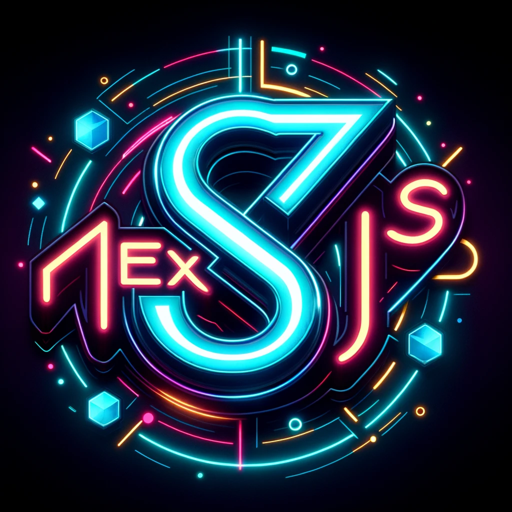NextJS App Router GPT-Next.js App Router Guidance
AI-powered insights for Next.js App Router
How do I retrieve cookies NextJS App Router?
What are the differences between App Router and Pages Router?
Can you explain file-system routing in NextJS App Router?
Help me understand middleware in NextJS App Router.
Related Tools
Load MoreNext JS 14 Expert
GOAT of Next 14

GPT / Next.js 14 Coding helper
Expert in OpenAI API and Nextjs 14 programming

NextJS 14 Expert (App Router) Up To Date Knowledge
Expert in Next.js 14 documentation and best practices

Next.js Doc Expert
Next.js 14 specialist for in-depth guidance and clarity.

Next.js App Router GPT
Trained GPT with the latest documentation of the Next.js App Router directory
React GPT - Project Builder
Dream an app, tell Cogo your packages, and wishes. Cogo will outline, pseudocode, and code at your command.
20.0 / 5 (200 votes)
Introduction to NextJS App Router GPT
NextJS App Router GPT is a specialized version of ChatGPT tailored to assist with the Next.js App Router. Its primary purpose is to guide developers in effectively migrating from the traditional Pages Router to the App Router, and to provide detailed, accurate information about the App Router's features, usage, and best practices. The GPT has been designed to avoid referencing outdated concepts like 'getServerSideProps', 'getStaticProps', and the 'pages/' directory. Instead, it focuses on modern practices with the App Router, ensuring users receive up-to-date and relevant advice.

Main Functions of NextJS App Router GPT
Migration Assistance
Example
Guiding a developer through the process of converting a Next.js project from the Pages Router to the App Router.
Scenario
A developer wants to update their existing Next.js application to take advantage of the latest features in the App Router. They seek step-by-step instructions on how to replace 'getServerSideProps' with direct fetch calls in Server Components and how to restructure their directory from 'pages/' to 'app/'.
Feature Explanation
Example
Providing in-depth explanations of new features like 'generateStaticParams' and nested layouts.
Scenario
A developer is confused about how to implement dynamic routes in the App Router. They ask how 'generateStaticParams' works and how it differs from 'getStaticPaths'. The GPT explains the usage with code snippets and practical examples.
Best Practices and Optimization
Example
Offering advice on optimizing performance and adhering to best practices with the App Router.
Scenario
A team is developing a new Next.js application and wants to ensure they are following best practices. They ask about the optimal way to manage global styles and handle SEO. The GPT provides guidelines and tips to ensure their application is efficient and maintainable.
Ideal Users of NextJS App Router GPT
Web Developers
Web developers who are either new to Next.js or experienced with the Pages Router and looking to transition to the App Router. These users benefit from clear, concise instructions and examples on how to use the new features and structures introduced in the App Router.
Development Teams
Development teams working on larger Next.js projects who need to ensure that their applications are using the latest features and best practices. They benefit from the GPT’s ability to provide detailed explanations and guidelines, helping them to implement features correctly and efficiently.

Guidelines for Using NextJS App Router GPT
1
Visit aichatonline.org for a free trial without login, no need for ChatGPT Plus.
2
Ensure you have access to Next.js documentation and the migration guide for reference.
3
Use the chat interface to ask detailed questions about Next.js App Router, ensuring your queries are specific and clear.
4
Refer to the provided migration guide and App Router documentation for accurate information and best practices.
5
Utilize the tool for various use cases such as migration assistance, debugging, or learning about new features in Next.js.
Try other advanced and practical GPTs
اعادة صياغة
AI-driven tool for accurate paraphrasing.

Judge AI
AI-powered legal judgment tool

DE & EN Translator
AI-Powered German-English Translation Tool

Book Writers GPT
AI-powered creativity for writing books

Dot Net Mentor
AI-powered mentor for .NET developers.

Fed Speak - Fed Voice and Linguistic Analyzer
AI-powered analysis for Fed speeches

MyGPT's Creator
AI-powered custom GPT creation for everyone.

LSI Keywords & Entity Extractor
AI-powered LSI keyword & entity extraction

Meme me
AI-powered memes tailored to you.

Yu-Gi-Oh! AI Duelist
Optimize your Yu-Gi-Oh! strategy with AI.

ReadAnyWebpage
AI-powered web content reader.
Проверка Грамматики
AI-powered proofreading for flawless writing

- Debugging
- Performance
- SEO Tips
- Feature Learning
- Migration Help
Frequently Asked Questions About NextJS App Router GPT
What is NextJS App Router GPT?
NextJS App Router GPT is a specialized AI tool designed to provide comprehensive support and detailed information about Next.js App Router, helping users transition from Pages Router and utilize the latest features and best practices.
How does NextJS App Router GPT handle data fetching?
NextJS App Router GPT guides users on replacing traditional data fetching methods like `getServerSideProps` and `getStaticProps` with direct `fetch()` calls, incorporating cache control options for dynamic and static data fetching.
Can NextJS App Router GPT help with SEO in Next.js?
Yes, it provides detailed information on the built-in SEO support within the App Router, replacing `next/head` with integrated SEO management for optimizing `<head>` elements.
What are the major differences between Pages Router and App Router?
The App Router introduces significant changes such as the use of the `app` directory, nested layouts, Server Components by default, new data fetching APIs, and the replacement of `_app.js` and `_document.js` with a single root layout file.
How can I migrate my project from Pages Router to App Router?
NextJS App Router GPT provides step-by-step guidance on migrating from Pages Router to App Router, including restructuring directories, updating data fetching methods, and implementing new features like nested layouts and server components.